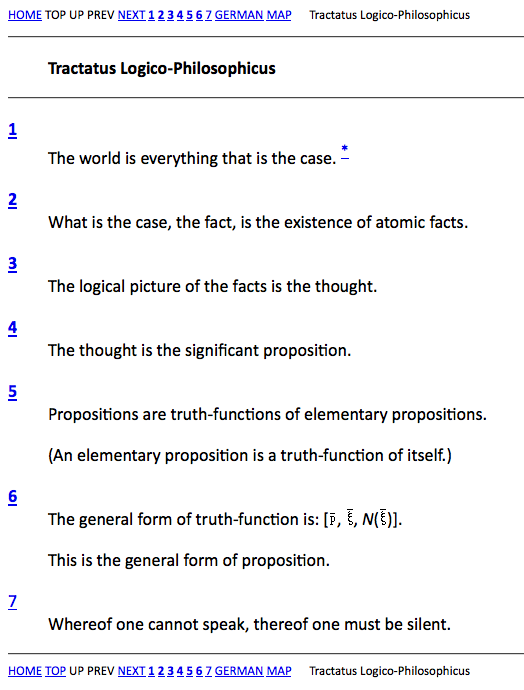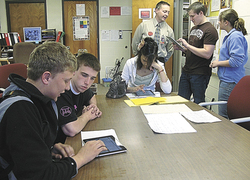As the BBC observed recently, sights and sounds of old-school video games have become an important part of popular music and culture. One beautiful example is the Japanese paper stop motion of Super Mario. This may be not the first time Super Mario comes to school but it is probably the most creative visit so far. The paper stop motion was produced within two weeks using sticky notes to reproduce the pixel graphics. Brilliant!
CTRL+K: Wittgenstein and Hyperlinks

Ludwig Wittgenstein’s Tractatus Logico-Philosophicus is the only book-length philosophical work published by the Austrian philosopher during his lifetime. It was an ambitious project, to identify the relationship between language and reality and to define the limits of science concluding: “Whereof one cannot speak, thereof one must be silent.” Wittgenstein wrote the Tractatus while he was a soldier and prisoner of war during World War I.

Some years ago, Jonathan Laventhol created a hypertext version of the bilingual edition of the Tractatus as a private study aid. According to him, the reader will have to make up his own mind about whether such a tool helps or hinders the appreciation of the book.

Michele Pasin, a researcher in Humanities Computing at King’s College, London, created another visualization of the Tractatus, wich tries to give the text a novel visual representation using HTML and tabs. This is part of the PhiloSURFical project Pasin developed during his PhD studies at the Knowledge Media Institute.

Althought the full text is online for free (www.gutenberg.org/ebooks/5740), maybe the best way to understand the text is still the book.


Well, you could also do what Bryan Magee did and ask someone like John Searle to explain a little bit further.
httpv://www.youtube.com/watch?v=qrmPq8pzG9Q
Finally, I am really not sure if Wittgenstein would have preferred hypertext to notebooks and papers. But I am convinced that different ways of exploring a text can enable the understanding.
No need for paper


Do you remember the era of the writing slate? Maybe your Grandma does. Paper was too expensive and too rare to be used in schools. Well, that changed over time and everyone who left school in the last 50 years should be aware of the amount of paper used in classrooms. While it’s hard to say that all paper is wasted, every single school can certainly cut down on the volume. Much of the paper that is carried home in students’ backpacks ends up unread in the recycle bin.
Now comes the iPad and with it new ways of thinking about paperless schools. One example is the purchase of 320 iPads in one Minnesota high school. The school district allocated $267,748 to its technology fund to become what is believed to be the first school in the country to have the devices at a cost of $479 each. The money will be used to buy 320 iPads with extended, two-year warranties for students and staff, create Wi-Fi infrastructure and provide staff training. According to an article on NUjournal.com Students like using iPads in school.
“One of the first things we have to do is determine what iPad applications best fit classroom curriculum.” said High School Principal Jeff Bertrang. “Students won’t have to buy $100 calculators anymore either,” he added. Imagine the paper savings over time, not to mention the cost savings as textbooks will be digitized in future.
